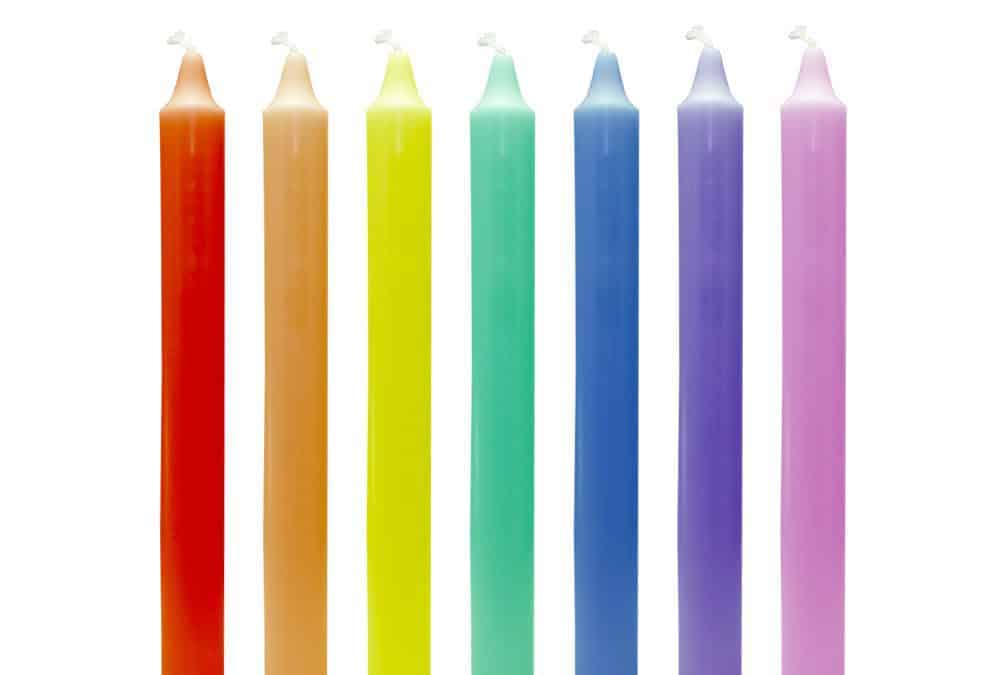A classic ACT Math question involves permutations, or figuring out the total number of options for a given scenario. Sometimes one of the trickiest questions on the ACT Math section can be a permutation question. In this article, I’ll share an easy trick for my ACT prep students to master these questions quickly and with confidence!
The fill-in-the-blank method for ACT Math permutations
To solve ACT Math permutation questions, use the fill-in-the-blank method! It’s easy. Draw blanks for the number of items you’re choosing, then write the number of options you have for each item. Multiply the numbers in the blanks and you’ve got your answer! Let’s see this method in action–first with an easy ACT Math permutation problem, and then with a hard ACT Math permutation problem.
Sample ACT Math permutation problem: easy
Sally has 7 candles, one in each color of the rainbow. For some reason, Sally wants to calculate the total possible number of ways she can arrange her 7 candles in a straight line from left to right.
To solve this problem, first draw blanks for the number of items to be arranged. Since Sally will be arranging 7 candles, you should draw 7 blanks.
__ __ __ __ __ __ __
Next, fill in the blanks with the number of options she has for each space.
7 6 5 4 3 2 1
Notice that the number of options decreases as you fill each blank. If you’ve already used the green candle, don’t use it again.
Finally, multiply the numbers together. What you’ve got here is 7*6*5*4*3*2*1, which is also 7! (7 factorial). The total number of arrangements for Sally’s 7 candles, then, is 5040.
Sample ACT Math permutation problem: hard
Now let’s examine a harder ACT Math permutation problem.
Let’s use our previous question as an example, but now let us assume that, for whatever reason, Sally wants the red and purple candles to be at either end of her arrangment. Now the total number of items is still 7, but the number of options for each space will change.
2 5 4 3 2 1 1
How did I decide on those numbers? I’ll explain. First, Sally will either place a red or purple candle at the end, so she has only 2 options for the first end. On the other end, therefore, Sally has only one choice–the candle she didn’t choose for the first end. Then she has five candles to choose from, then four, then three, then two, and then one. Multiply these numbers together and you have the total number of arrangements possible when only the red and purple candles are alllowed to be on the end!
2*5*4*3*2*1*1=240 possible arrangements!
I hope it makes sense! In your journey toward a perfect score of 36 on the ACT Math section, use the fill-in-the-blank method, and don’t let permutations trip you up!
* * *
That’s it! For more ACT prep tips and tricks, check out the rest of our blog. Looking for ACT prep tutoring or ACT small group classes? Click here to check out your options!
